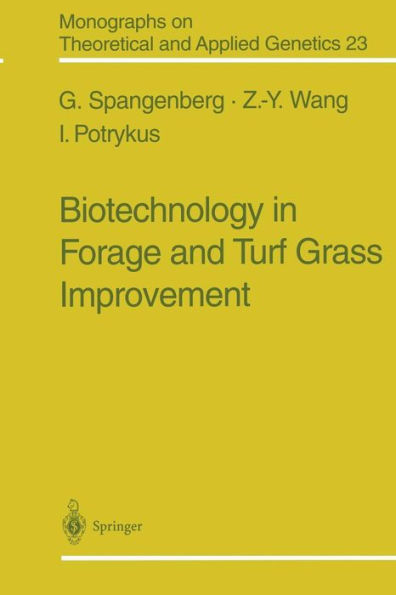Biotechnology in Forage and Turf Grass Improvement
This book shows the significant progress made in establishing the methodological basis for the genetic manipulation of forage and turf grasses, with particular emphasis on our most important temperate grasses, the fescues and ryegrasses. It provides detailed and beautifully illustrated descriptions of all relevant methodological aspects of molecular breeding of forage and turf grasses. The topics covered range from the establishment of plant regeneration systems from in vitro cultures, the recovery of haploids and somaclonal variants, the combination of whole or partial genomes by somatic hybridization, and the production of transgenic plants, to the development of molecular markers.
"1100829059"
Biotechnology in Forage and Turf Grass Improvement
This book shows the significant progress made in establishing the methodological basis for the genetic manipulation of forage and turf grasses, with particular emphasis on our most important temperate grasses, the fescues and ryegrasses. It provides detailed and beautifully illustrated descriptions of all relevant methodological aspects of molecular breeding of forage and turf grasses. The topics covered range from the establishment of plant regeneration systems from in vitro cultures, the recovery of haploids and somaclonal variants, the combination of whole or partial genomes by somatic hybridization, and the production of transgenic plants, to the development of molecular markers.
109.99
In Stock
5
1

Biotechnology in Forage and Turf Grass Improvement
201
Biotechnology in Forage and Turf Grass Improvement
201Paperback(Softcover reprint of the original 1st ed. 1998)
$109.99
109.99
In Stock

Product Details
| ISBN-13: | 9783642720536 |
|---|---|
| Publisher: | Springer Berlin Heidelberg |
| Publication date: | 08/19/2012 |
| Series: | Monographs on Theoretical and Applied Genetics , #23 |
| Edition description: | Softcover reprint of the original 1st ed. 1998 |
| Pages: | 201 |
| Product dimensions: | 6.10(w) x 9.25(h) x 0.02(d) |
From the B&N Reads Blog
